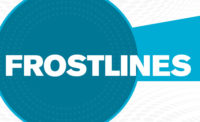The Forecast Will Be Wrong
A forecast in this day and age is actually always going to be wrong because the reality is complex. On a global scale, one needs to conduct economic forecasts that will almost never hit the true outcome. This is similar to sales forecasts and logistics forecasts that depend on other factors to come true. They will be off. But that’s OK. Because one who views a forecast only as something that absolutely has to come true does not understand forecasting.
A Forecast Is A Social Construct
A forecast is a social construct. And it is created through analytics, and at the same time, people often view forecasting as a kind of “natural principle,” that the forecast is the same as a physics equation. But this is not true. Forecasts are constructed and probably depend on as much as thoughts and assumptions as on a “reality.” Take the example of “profit.” People often think that there is and can be only one figure for profit. But it’s a social construct. It depends on what one wants to communicate. Profit can vary from country to country, depending on legislation. Logistics forecast can be different depending on how the input variables were interpreted (“hmm, my risky estimate” …).
The True Power of Forecasting Comes From the Process of Forecasting
The above statements don’t make forecasting obsolete. On the contrary, having the discussions and debates about forecasting are the really important things. They reveal the issues; they show the points that need to be covered. So, it’s not really the outcome as much as the process of forecasting that is really of value. The process forces stakeholders to provide inputs, resulting in discussion and alignments. These are truly valuable things, the enabling of communicating.
A Great Forecast Shows the System Interconnections and the Breaking Points
Anybody who has ever created a forecast will know that the pieces of a forecast need to fit together. And sometimes it’s like a “mobile” — you pull here, and then you lose out somewhere else. It is sometimes seemingly impossible to put a coherent forecast together. But this play is extremely powerful. It shows the gaps in common understanding. A powerful exercise in this regard is a simple “matrix forecast,” i.e., bringing two entities together in sync: Examples for this are “Regions & Business units” or “P&L and Cash Flow.” Technically, this should be easy. But soon gaps will show. And this is good. Because the process and highlights of doing this exercise will quickly show the weak points, the gaps. That’s where one needs to put one’s finger and “dig deeper” to uncover issues, conflicts and the like.
The Power of a Forecast Is Bringing Rationality to the Discussion Table
Within a lot of teams and organizations, there is a problem: People are hiding behind words and thoughts and discussions that sound good. “We will deliver the strategic logistics initiative.” But what does that mean? With a forecast, one can bring thoughts back to the total picture and see how the proposals, etc. fit into the forecast. With a forecast, one can ask, “OK, thanks for the input, Frank, but how will this impact the forecast?” And that brings a different level of understanding and rationality to discussions.
A Forecast Cannot and Should Not Reflect Reality in All Granular Details
Sometimes people think that the forecaster should have foreseen everything. “Maria, please explain why this truck in week 45 has not arrived on time as you foresaw two months ago”? The thing is, the same way we can prevent a fire by putting a fire brigade on every floor of every building, we could have the “perfect” forecast by having 30 people forecast everything in real time. The issue: That doesn’t help us. Therefore, it is much more important to accept that it’s an approximation — and then not “kill the messenger” if the forecast is not right, and not demand an in-depth reconciliation of every forecast item. That kills the forecast process.
A Great Forecast Has a Well-Managed and Transparent “Pad”
A good forecaster has some forecast buffers built into his or her forecast. This keeps a forecast stable when some shocks come to the system, and balances unforeseen events. But — and this is important: This needs to be a very transparent process. If not, everybody else in the forecast process will build in “pads.” And then you end up with an overblown forecast — one that does not come true and ends up in surprises. This is to be avoided at all costs.
Forecasting is great, but only if one sees a forecast for what it is: A guide, the result of a social process, and not a picture-perfect reflection of reality.











